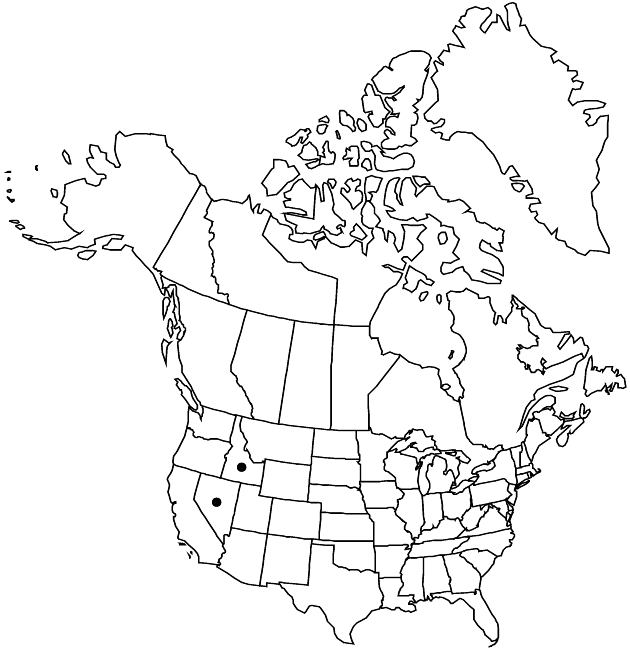Erigeron latus
Brittonia 6: 192. 1947.
Perennials, 3–8 cm; taprooted, caudices branched. Stems erect, sparsely hirsuto-villous (hairs equal), densely minutely glandular. Leaves mostly basal (persistent; petioles prominently ciliate, hairs spreading, thick-based); blades oblanceolate-spatulate to oblanceolate, 30–60 × 3–6 mm, cauline usually abruptly reduced distally, margins entire, coarsely ciliate, faces hirsute to hirsuto-villous, densely minutely glandular. Heads 1. Involucres 8–10 × 10–20 mm wide. Phyllaries in 2–3 series, sparsely hirsuto-villous, densely minutely glandular. Ray-florets 15–25; corollas pinkish to purple, 7–10 mm, laminae coiling. Disc corollas 4.5–6 mm. Cypselae 3.5–4.5 mm, 2 (–3) -nerved, faces sparsely strigose to glabrate; pappi: outer sometimes of setae, sometimes 0, inner of 20–27 bristles.
Phenology: Flowering May–Jul(–Aug).
Habitat: Flat to gently sloping, open sites with shallow, gravelly soils over bedrock, volcanic sands and cinder, often with sagebrush or sagebrush-juniper, rhyolitic riparian areas
Elevation: 1400–2200 m
Discussion
Selected References
None.
